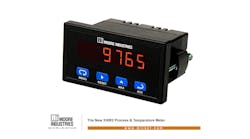NSF International, a global organization that certifies products and writes standards for wastewater, drinking water, food and consumer goods, has signed a Memorandum of Understanding (MOU) with the U.S. Environmental Protection Agency (EPA), U.S. Centers of Disease Control and Prevention (CDC) and 14 other national organizations, signifying their commitment to improving onsite wastewater treatment systems.
The NSF says the MOU is part of a continued effort to expand its water and environmental expertise through its sustainability division. As part of this initiative, the NSF announced last week the publication of a new standard and certification for residential and commercial onsite water reuse treatment systems to ensure systems properly treat graywater and combined wastewater. According to the EPA, about 20 percent of U.S. residences discharge four billion gallons of sewage daily into septic systems, and it’s estimated that 10 percent and 20 percent may not be properly treating wastewater.
Under the MOU, NSF International will continue its collaboration with the EPA and other partner organizations to improve the nation”s estimated 26 million onsite treatment systems (often referred to as septic or decentralized systems). The goal is to encourage proper selection, use and management of onsite, decentralized treatment systems to protect public health and the environment.
“The purpose of the renewed MOUs, first in 2008 and now again in 2011, is to continue and expand the ongoing collaborative relationships and to add organizations which focus on public health protection, product testing, and professional accreditation,” the EPA said in a statement. “The addition of both CDC and NSF International will enhance the partnership”s access and understanding of relevant public health research, priorities, and initiatives along with state-of-the-art product certification and testing and professional accreditation.”

